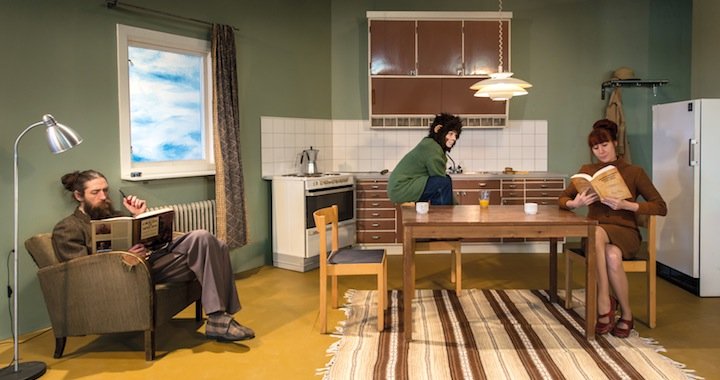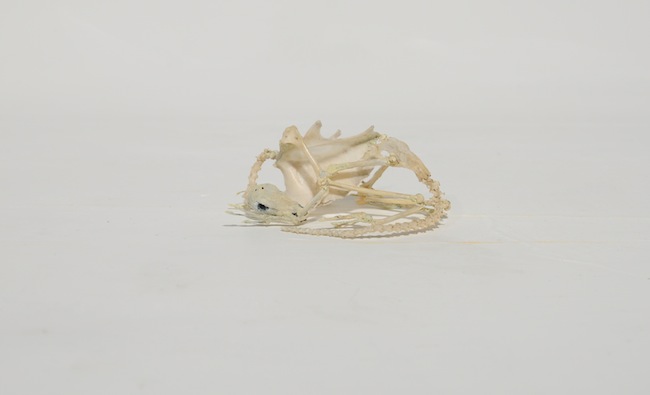
Idyll from a Nordic Viewpoint. Turku Biennial 2013
27/06/2013
Turku Biennial 2013
Finland
May 9 – September 1, 2013
The Turku Biennial 2013 is the sixth of the exhibitions organised regularly every two years by Aboa Vetus & Ars Nova, the private-owned museum of history and contemporary art in Turku, Finland. It is now ten years since the first exhibition of the series was held.
In 2013 the Turku Biennial examines the idyll from a Nordic viewpoint. Fifteen artists or artist groups from Finland, Sweden, Norway, Denmark and Iceland have been invited to take part in the exhibition. They have made new works that are on show for the first time in the exhibition. The choice of artists was made by the members of the curatorial team from Aboa Vetus & Ars Nova – curator Silja Lehtonen, museum director Johanna Lehto- Vahtera, PR officer Laura Boxberg –, and a group of curators working in the Nordic countries – curator and critic Power Ekroth (Sweden), artist and curator Karolin Tampere (Norway), artist and curator Ellen Friis (Denmark) and art historian, curator Æsa Sigurjónsdóttir (Iceland).
Today the word “idyll” is very close to becoming a cliché. It encompasses in equal measures irony and genuine escapism, a state of harmony to be aspired to. The word is charged with an enormous number of meanings; for some it is empty talk, for many it is something that has been lost forever. Intertwined with the theme are also the concepts of nostalgia, nostalgisation. The Nordic welfare state in itself harbours features of an idyllic society, but what is the reality of a Nordic idyll?
Arterritory.com contacted curator Silja Lehtonen to understand her viewpoint on the Nordic idyll and how it has shaped the Turku Biennial 2013.
What does “Idyll” mean to you and why is it the theme of this edition of Turku Biennial? Does it describe the current situation in contemporary art?
The "Idyll" can mean so many things, which is one of the reasons it became the theme of the Turku Biennial. It is at the same time an empty cliché and a deeply personal, unreachable dream or utopia. The fact that the concept came into being in antiquity but still is in use in our culture, is also interesting.
The theme was chosen as a result of a meandering discussion within the exhibition team. We felt this would be a theme that is not worn out nor too abstract. We hoped it would allow the artists to examine the idyll from many different viewpoints, which is just what happened.
Has there been a shared notion of “idyll” amongst the participating artists?
The spectrum of how the idyll is examined in the Turku Biennial is very wide. Universally shared ideas of the idyll are present, as well as questioning what such a thing as an idyll really is in our society. Personal idylls are also revealed to the audience and the idyll is also viewed critically.
Some have criticized the “Nordic” theme, which also appears in this year’s concept of Turku Biennial, for being nationalistic and exclusive. What are your thoughts on the subject?
Since 2003 each Turku Biennial has been constructed in a different way, always aiming for an international mix of artists from a certain country or certain countries. So far we haven't organised a Nordic exhibition and 2013 was a good time for this. Of course bringing together this particular theme and the "idylls" of Nordic countries was inspiring and clearly raised many thoughts within the curatorial team.
How did you choose which artists to represent at the biennial?
The artists were chosen by curators who work with contemporary art in each Nordic country. Already at the start of the process everyone had their own individual approaches to the theme and this obviously guided the selection process of each of us. The curators are myself, Laura Boxberg, Eeva Holkeri and Johanna Lehto-Vahtera from Finland, Power Ekroth from Sweden, Ellen Friis from Denmark, Karolin Tampere from Norway and Æsa Sigurjónsdóttir from Iceland.
Has the wide curatorial board influenced the concept of Turku Biennial 2013?
Such a wide curatorial team is not typical when creating a group exhibition, but it has been a very good experience. All our curators are so professional and it was a pleasure to communicate with everyone about the artist selections and the thoughts raised by the theme. So yes, in many ways working together with several invited curators has had a positive influence on the Turku Biennial 2013.
Could you name three highlights of the Turku Biennial?
Every time I walk through the exhibition I find a new highlight! So it is impossible to name just three. Just as the participating artists, we all have our own idylls, so I suppose everyone will find their own highlights, too.

Elina Saloranta (1968)
. Morning
. 2013.
Video
00:21:30

Joar Nango (1979) and Tanya Busse (1982).
Extracted Suggestions
. 2013. Installation

Emil Ásgrimsson (1985)
. Perspective.
2013.
Animation and installation

Tilda Lovell (1972)
. Untitled Landescape.
2013. Installation
Itäinen Rantakatu 4–6
Turku, Finland
www.turkubiennaali.fi